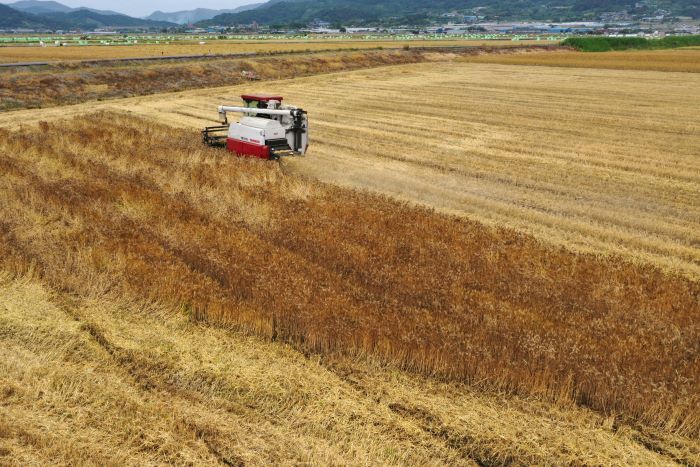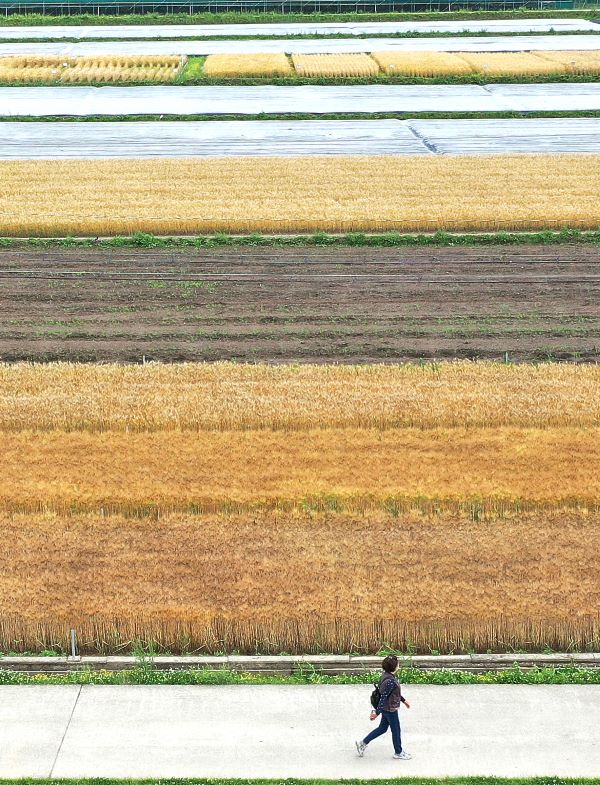
A week before the seasonal harvest, on the morning of the 30th, the fields of Hakjeong-dong, Buk-gu, Daegu are adorned with flourishing crops like barley.
DAEGU & BOSEONG, May 31 (Korea Bizwire) —Next week, on June 6th, we will celebrate Mangjong, also known as awned grain, which is the ninth of the 24 solar terms. Mangjong indicates the celestial longitude reaching 75 degrees and signifies an auspicious time for sowing the seeds of bearded grains, such as rice.

In Deokryang-myeon, Boseong-gun, Jeollanam-do, the fields turn into a mesmerizing golden yellow on May 26, marking the ideal moment for harvesting wheat and barley.
In agrarian communities, it was crucial to harvest all the barley and plant rice in the rice fields by the conclusion of Mangjong. This period represented the optimal time for rice cultivation and barley harvesting. Consequently, several proverbs became associated with Mangjong, including “barley should be harvested three days before Mangjong” and “barley past its Mangjong.”

A farmer harvests barley with a combine in a field in Joseong-myeon, Boseong-gun in South Jeolla Province, on May 26.
An additional proverb states “peeing on the instep during the Mangjong period,” symbolizing the hectic nature of this time in agricultural societies, coinciding with the planting of rice and the harvesting of barley. Moreover, the timing of Mangjong, whether early or late, was considered a predictor of a good or bad year, leading to the expression “Watching Mangjong” to forecast farming prosperity.

After completing the barley harvest, on May 26, a farmer in Deokryang-myeon, Boseong-gun in Jeollanam-do, South Korea, practices the traditional method of burning barley straw in the field. This practice is carried out to prepare the land for growing rice as an intercrop.
The phrase “barley past its Mangjong” was also used metaphorically to illustrate the decline in value or desirability of something after a certain period of time. Particularly in earlier times when people married at a young age, a woman over twenty was considered an “over-aged virgin” past the appropriate age for marriage. The expression “barley past its Mangjong” was employed when describing a woman whose beauty had peaked and was now fading, with no suitable groom available.
Towards the end of the Mangjong season, plum blossoms begin to bear fruit. Following the season’s conclusion, people would gather plums to make plum pickles, plum juice, and plum wine. It was believed that mantises were born and fireflies appeared around the time of Mangjong, signifying a significant period of change in agricultural society.
Image credit: Yonhap / photonews@koreabizwire.com








